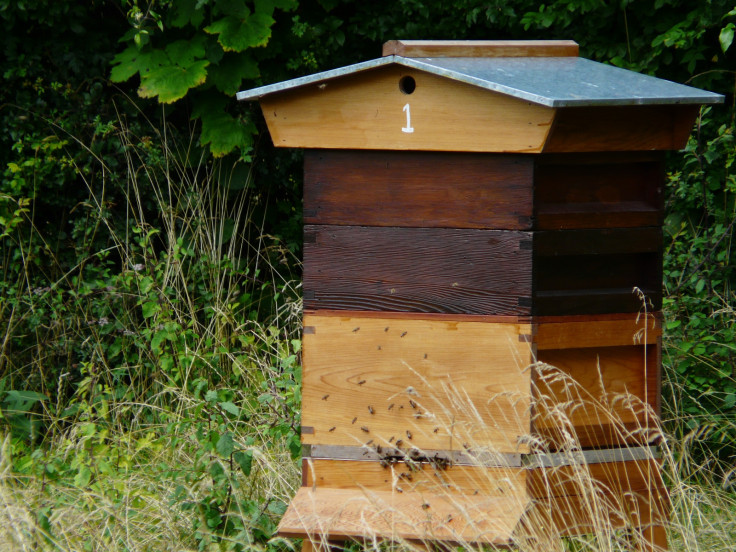Bees poisoned by pesticides could be saved by bursts of infrared light
Installing infrared lights in hives could help to save the plummeting bee population.
Inexpensive infrared lights could be used in beehives to combat the harmful effects of neonicotinoid pesticides on bees, a study has found.
The study, published in the journal PLOS One, found that two 15-minute bursts of infrared light were enough to reverse the effects of the neonicotinoid pesticide imacloprid on bumblebees. Bees that had been poisoned regained their ability to move and their survival rates improved significantly with the light treatment, the authors say.
The infrared light acts on the mitochondria – the energy powerhouse of the cell – which are damaged by neonicotinoids, study author Glen Jeffery of UCL's Institute of Ophthalmology told IBTimes UK. A molecule in the mitochondria called cytochrome c oxidase is particularly affected by infrared light of the wavelength used in the study – 670 nanometers.
"The thing about impacloprid is that the poisoned bee basically can't move," says Jeffery. "If it can't move it can't feed." Jeffery aimed to see whether it was possible to make the bees functional again when exposed to imacloprid.

The team poisoned some of the bees with imacloprid, treating some of them with infrared light and leaving others without. The consistency of the effects of the infrared light were startling, Jeffery says. "To be honest I nearly fell off my chair. We repeated it time after time after time – and time after time it worked."
Christopher Connolly of the University of Dundee says that this raises the question of whether infrared light could be applicable in the field to reverse the damaging effects of neonicotinoids on bees. "Clearly exposure to red light would need to be restricted to their nests to be effective. In the case of the bees studied - bumblebees - this is not possible for wild native colonies as they are hard to find and unlikely to be cooperative."
However, if the same approach works as an antidote for honeybee exposure to neonicotinoids, "there would be substantial interest among the millions of concerned beekeepers worldwide", says Connolly.
Flies, humans – and now bees
Jeffery had previously done tests on old fruit flies with infrared light, and found that their mobility improves when exposed to infrared light. However he was original working on the effects of infrared light in human eyes, specifically in those who suffer from macular degeneration – a progressive condition that ends in loss of sight.
"All cells have got mitochondria supply the energy that cells generally need," Jeffery says. "I was working on the hypothesis that mitochondria in these eyes were suffering, there wasn't enough energy."

The idea that bees might be suffering from a similar problem in their mitochondria was a stroke of luck, he says. "It was a cycle ride home up the Holloway Road in a headwind and it was raining, and suddenly I remembered I'd read something that day about bees and the fact that the cells get overstimulated [by neonicotinoids] and the mitochondria run down. I thought hang on, there might be a link here."
Jeffery shortly after ordered a beehive, complete with bees, to test the idea. "I've never been so frightened in my life – and this thing was being delivered by the Post Office," he says.
Save a hive for £15
The effects of the infrared light on the mitochondria appear to last as long as the animals receive the pulses of light regularly. "It fits with the idea that if mitochondria decline, you're going to get systemic failure. And what the light does is get you over those problems. If you give it on a regular basis, certainly flies and mice remain perfectly happy for quite a period of time."
The infrared lights that Jeffery are cheap and can be bought online. "It's desperately simple," he says. "We've looked at what it's going to take to put these things in hives. You're talking about putting in something in there that costs about £15-20."
Given the risk of the growing pollination problem and plummeting bee populations, Jeffery says that it would be "crazy" not to install the lights in hives. "The impact in terms of what it's going to do for pollination could be very significant because it costs very, very little."
He adds that bees that have not been exposed to imacloprid also benefited from the infrared light. "They live longer. It's a win-win situation."
"With these lights so far, we've been using them for about four years on mice, my relatives, my colleagues, flies – there isn't a downside," Jeffery says. "There isn't a crash afterwards."

© Copyright IBTimes 2024. All rights reserved.






